ARABIC CALLIGRAPHY is an ancient art form passed down by the most dedicated calligraphers for centuries with its beautiful curves, angles and fine artistic compounds. All forms of Arabic script were the results of dedicated individuals who wanted nothing more than to present the beauty of the Holy Qur’an’s chapters in the written form using different styles created over time. It’s no question that the beauty of all words lay in the forms they’re presented in, from modern calligraffiti to ancient thuluth. Not only has calligraphy been used for the Holy Qur’an, it was used in architecture, decoration, coin design and various other purposes in different periods and locations of the expansive Islamic Empire. It’s no surprise that calligraphy is used on many structures we see today, some dating back to hundreds of years and in the age of technology, calligraphy is still used today as it would be hundreds of years ago.
Calligraphy isn’t a normal art form that is used by a majority or artists, it’s a special kind of art form, private, sacred, exceptional and only those who are sincerely observant, dedicated and willing are able to understand the hidden treasures behind learning the art of calligraphy. Some might say that thuluth is one of the most beautiful types of all Arabic and Islamic calligraphy, the beautiful curved letters by a single reed pen might look like it’s an easy task to perform but it’s more than simple strokes of the reed. Ahmad Jeddawi is a calligrapher in practice, a scribe if you may, whose love for calligraphy goes back to his school days. “I had a good environment surrounding me in school, you’d find me participating in any extracurricular activities related to calligraphy, my teachers were supportive, and so were my friends, I felt that I was able to show my work through the different projects they’d ask me to join. It was then that I found that I can and wanted to continue learning more about calligraphy, it wasn’t easy, but I wanted to grow more through it,” says Jeddawi.
On the process of learning, Ahmad explains that learning the basics takes practice, practice and more practice.
Time is an essential part of each learning process and as a young architect; it’s the way he makes time for it is what is interesting. Just as young Ahmad started to search for his path in life, calligraphy is what lead him to choose his career path and prosper in it at such a young age. It takes a lot of creativity, innovative ideas, practiced lines and precise design to be able to make time for both and as a student his educational path ever so often trumped his love for calligraphy.
“To become a certified calligrapher, you have to always be under the teachings of a calligraphy master. I need to follow up on my progress periodically, correct mistakes made, explain the rules and boundaries of which I can’t stray too far from and help in finding the peace of mind needed to advance myself in Thuluth calligraphy. I had an amazing teacher, a maser in this field, but due to studies at KFUPM in the Eastern Province, I found myself alone and unable to continue with my master, but that still didn’t keep me away. Calligraphy helped me find the 'architect' in me.”
Although without the masterful eye of his teacher, he never let his passion deflate or overcome by an external factor, he did the opposite, and he combined both to excel in both. Combining his trained and practiced concentrated strokes with the straight angular lines of his projects, Ahmad found a way to not only combine two passions, but to effectively bring them to modern times.
He explains that as much as both fields might seem different, they’re actually very much alike. The measurements of the Arabic letters and the guide to proportions follow the same guidelines adopted to regulate the dimensions, proportions or construction of the parts of a building; the core understanding of each field follows the same guiding principles even when each can’t be further apart from one another. From an artistic point of view, science when applied in a balanced format is a form of art in its own way.
As difficult as it may seem, Jeddawi’s artistic eye helped him expand his conception of calligraphy using the skills he learned to become an architect. “Calligraphy is a dedicated field, the level of concentration is evident when a calligrapher succeeds in hand-eye coordination, a level of sensitivity required for that perfect stroke of the pen,” explains Ahmad. “There’s a saying in Arabic that translates to explaining of how one can decipher the secrets to calligraphy depending on himself after requesting the assistance of the Almighty in order to reach precision except for the fact that the need of a teaching master is dire in order to continue practicing and reaching that level of precision. Having been away from my master might’ve helped with the self-teaching, I still need a master to receive my ijazah (license) and become a master myself.”
Thuluth holds a special place in Ahmad Jeddawi’s art form, he is able to see the beauty of thuluth calligraphy in building structures not many notice, such as the Mihrab, the semicircular niche in the wall of a mosque that indicates the qibla as an example. Ahmad told of how thuluth is one type of khat that is not only significant but one of the most widely used in the Islamic world for its clear structure, readability and use of architectural decorations bringing more emphasis to the beauty of the written word.
“I don’t simply want to be a calligrapher; I want to see where it would take me. I want my calligraphy sketches to fill in the spaces in my architectural designs and have it as an important pillar of any interior design I am able to produce. I strive to reach a level where my preserved compositions are on display, to display the beauty of thuluth and be a teaching tool for any starting calligrapher. Calligraphy is the geometry of the spirit, a religious experience rather than esthetic.”
Be sure to follow on more of Ahmad Jeddawi’s journey into the world of calligraphy as he strives to combine his two passions on his Instagram page. Whoever said the written word is boring clearly has never seen a calligrapher at work.
—
Email: life.style@arabnews.com
The mindset behind thuluth calligraphy
The mindset behind thuluth calligraphy

Sir Brian Clarke’s artwork in Bahrain depicts vision of harmony

MANAMA: Symbolizing hope and beauty, an impressive stained-glass artwork by veteran British artist Sir Brian Clarke has been unveiled at Bahrain International Airport. Brimming with vibrant hues, brought alive by natural light shining through the glass, it is a visual symphony of geometrical details and natural elements, such as jasmine flowers, birds, and dragonflies. The work is called "Concordia" – the notion of living together in peace and harmony.
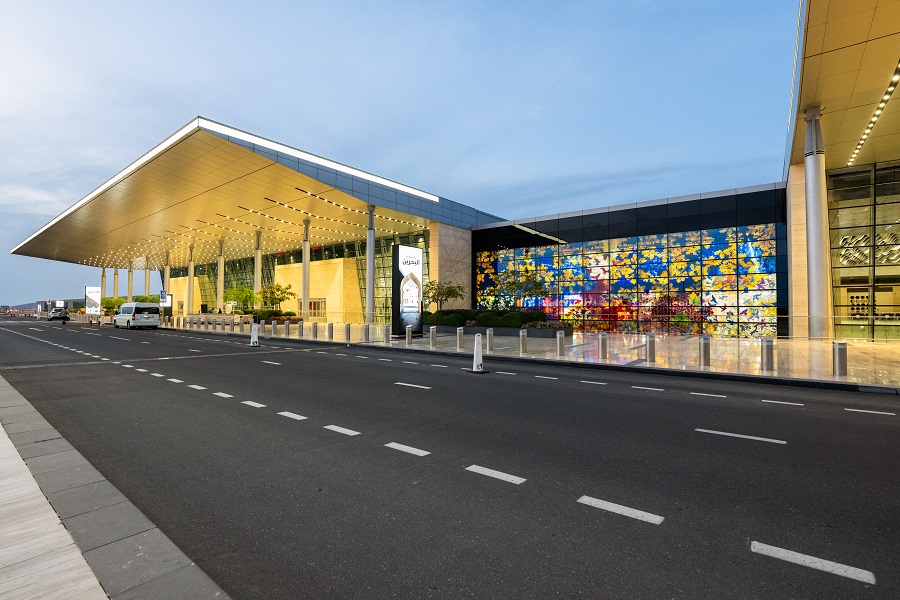
"What art does best is it transcends borders, speaks to everyone, brings us all closer together," Sheikh Salman bin Khalifa Al-Khalifa, Bahrain's minister of finance, said in the opening remarks at the April 10 unveiling event, attended by dignitaries including Bahrain's prime minister, Salman bin Hamad Al-Khalifa. "This visionary masterpiece by Sir Brian Clarke shines a light on the Kingdom of Bahrain's longstanding commitment to integrating our culture and heritage into national projects. But 'Concordia' is more than just a work of art. It is a symbol of Bahrain's openness, hospitality and ambition."
The work references Islamic geometry, and also features elements of medieval European tapestries and illuminated Christian manuscripts from the Books of Hours, prayer books from the Middle Ages. The work itself, standing tall at 34 meters in width and 17 meters in height, was an intensive labor of love that took more than two years to design, produce and install.
The colorful glass of “Concordia” was crafted by a team of artisans in Germany over a period of 40 days. It took 43 days to install the 127 individual panel work at the airport. For Clarke — whose stained-glass pieces can be found in the UK, Spain and Japan, among other places — “Concordia” has a special place in his practice.
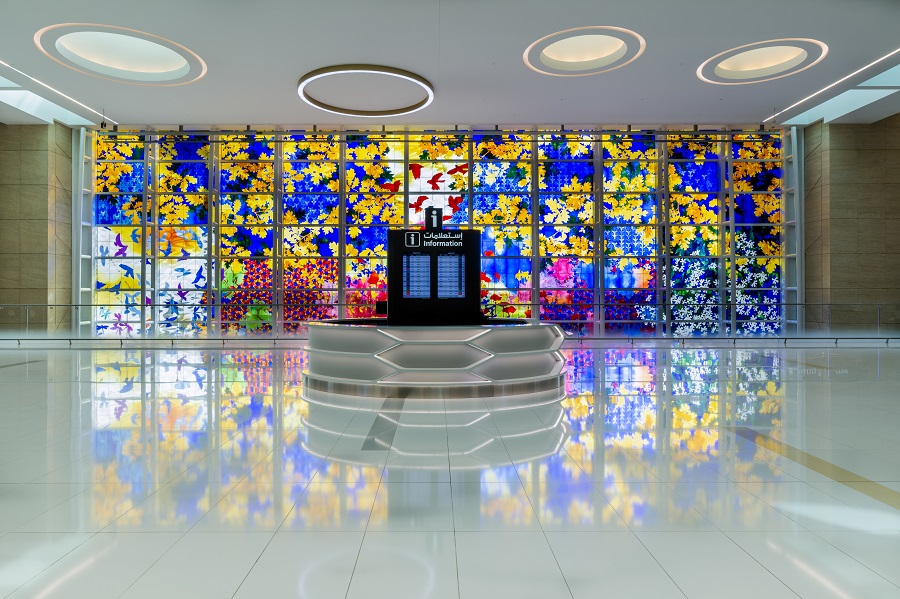
“I have always had a dream of making a composition in a building on a great rectangular scale that is like a view through to another world,” he said in a written statement shared after Arab News attended the unveiling event. "It’s something that in some ways unites the two parts of the world, the one that I come from and this region. Everything I have ever learned about stained glass is in some ways expressed in this window. I am very grateful that I am able to share my enthusiasms about paradise with anyone who sees this window.”
Arab designers shine at Milan Design Week

- Several designers and firms from the Middle East presented creations with features highlighting Arab culture and heritage
DUBAI: Arguably the largest annual global gathering for interior and furniture designers, Milan Design Week, staged this year from April 7-13, saw several designers and firms from the Arab world present at the prestigious event.
One exhibition there, Gucci’s “Bamboo Encounters,” curated and designed by 2050+ and its founder Ippolito Pestellini Laparelli, explores the role of bamboo in the brand’s history, featuring specially commissioned pieces by contemporary designers from around the world.
In post-World War II Italy, raw materials were difficult to source and so the fashion house’s founder Guccio Gucci opted for the lightweight and resilient bamboo as an alternative handle for bags. Florentine artisans creating Gucci bags supported a design that incorporated bamboo. The result was the iconic Gucci Bamboo 1947 bag.
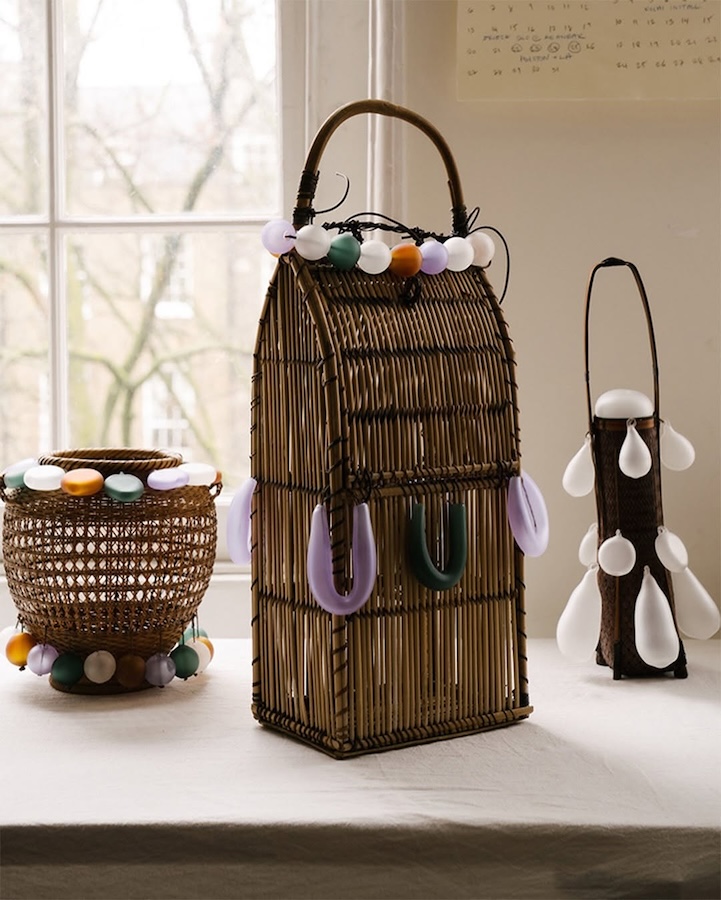
Among the various commissioned designers in “Bamboo Encounters” is Dima Srouji, a Palestinian architect and artist. Her bamboo-style baskets, “Hybrid Exhalations,” showcase basketry traditions of the Levant, incorporating hand-foraged bamboo with delicate blown glass by the Twam family in Palestine. The pieces evoke a sense of fragile beauty and resilience.
During her three months of research, Srouji fell in love with the history of basket-making.
“I really like this idea of time passing and the amount of time that it requires to weave baskets really slowly by these anonymous artisans from all over the world,” she told Arab News.
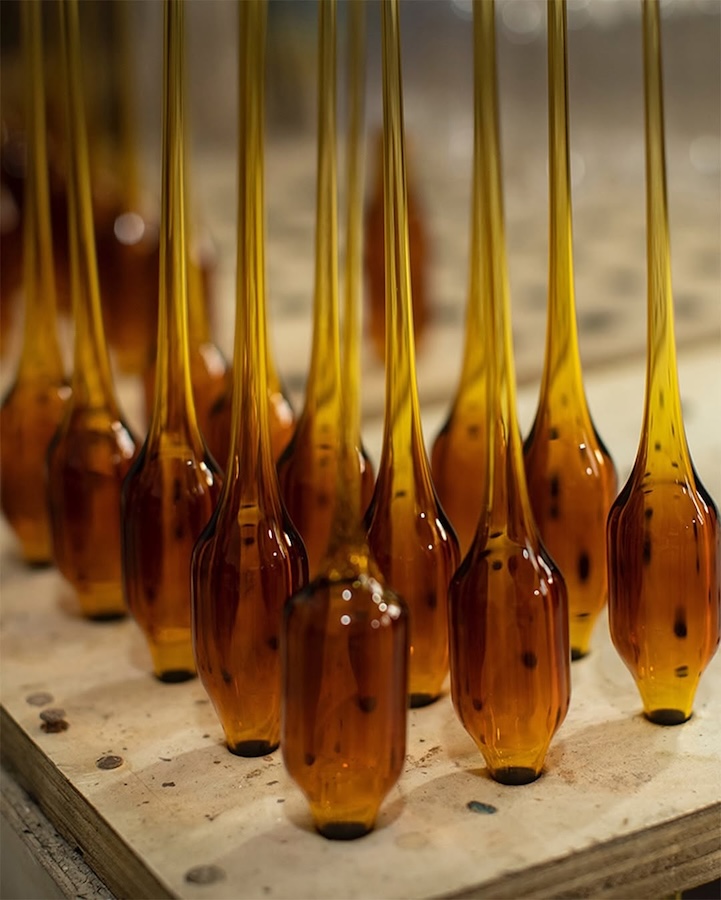
“Some of these baskets were found online, like on eBay. Some of them were from different auctions, and each one is from a different country. Some are even flower baskets from Japan; fish baskets and egg baskets from Philippines, one is a World War II hat from the UK from an English gentleman that got it from Vietnam in the 1940s.”
Srouji transformed them into playful, organic forms by combining them with blown-glass pieces that she made with Palestinian glassblowers; the Twam family that she has been working with for the past 10 years. They are based in Jaba’, a historic village located northeast of Jerusalem between Ramallah and Jerusalem.
“The combination of the glass and the baskets happened in my studio where I started weaving the glass into the already woven baskets and they became their own living creatures,” Srouji said. “They’re airy, playful, and each (piece) has embedded memories in them. Each one tells a different story from a different part of the world, and it’s an important moment to think about joy and celebrate the history of Palestinian tradition, and especially during such a dark time.”

At Isola Design Festival by Isola Design Group, which has offices in Dubai Design District (d3), several emerging designers from the Arab world presented their work. One is Jordanian designer Victoria Dabdoub who presented her first collection, “Stone Objects: A Study of Core Solids,” made of several hand-shaped stone masses connected by a brass piece. The result is elegant and playful candle-holders that invite the user to make their own display using several pieces.
“My work looks at local practices in Jordan and Palestine and aims to work with local artisans to develop contemporary pieces,” Dabdoub said. “My first collection is a collection of stone candle-holders that I made during two workshops in Amman, one involving metalwork and the other stonework.”
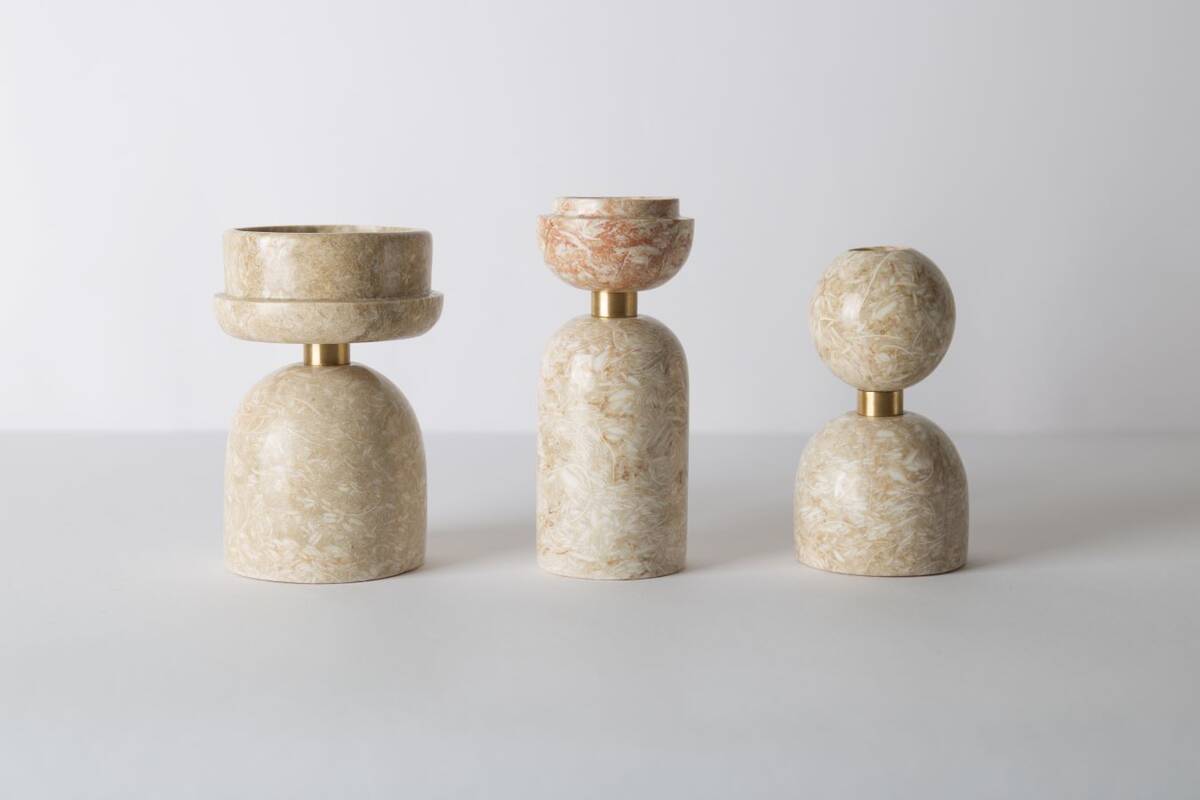
She added: “I think it is important to produce high-quality products locally. The stone is limestone from the south of Jordan and the brass is sourced in the market, likely from Italy or elsewhere. Whether I am working from Jordan or Palestine, it is important to try and incorporate local practices, especially given the war taking place and the number of voices that are unheard. Trying to say something through design, crafts and material and heritage is crucial.”
Etereo, the creative studio based between Dubai and Milan, returns to Milan Design Week with an immersive exhibition at Nilufar Depot, featuring its popular “Faraglioni” and “Grottesche” collections. The alluring forms, materials and colors of these pieces celebrate the synergies between design and nature, especially those found in the Mediterranean.

The “Faraglioni” collection, produced exclusively for Nilufar in a limited edition, showcases the essence of the sea within interior spaces through sculptural designs — a centerpiece table, dining table, coffee table, and two consoles that pay homage to the famous Faraglioni rocks of Capri that represent timeless natural wonders and heritage.
Cristiano Ronaldo, Georgina Rodriguez star in Saudi cruise campaign

DUBAI: Portuguese footballer Cristiano Ronaldo and Argentine model Georgina Rodriguez appeared together in a new campaign for Saudi Arabia’s luxury cruise line, Aroya Cruises.
In the video, the pair exchange a lighthearted moment in Arabic, with Rodriguez saying “yalla” after selecting the cruise on her phone and Ronaldo replying with a cheerful “yalla,” meaning “let’s go.”
The campaign then transitions into scenes of the couple exploring the cruise experience, showcasing panoramic sea views, luxurious interiors, and their private accommodation on board.
Both Ronaldo and Rodriguez shared the campaign on their social media profiles, captioning the post: “Home isn’t just a place—it’s a feeling.”
The Aroya cruise ship features a range of amenities, including a spa, multiple restaurants, a theater, water park, retail area, kids’ zone and several swimming pools.
Currently operating primarily from Jeddah, Aroya Cruises offers voyages across the Red Sea, with stops at destinations such as Sharm El-Sheikh in Egypt, Aqaba in Jordan and Jabal Al-Sabaya Island.
Starting June 2025, the cruise line will expand its operations to the Eastern Mediterranean, with new itineraries departing from Istanbul and visiting ports in Greece and Turkiye, including Mykonos, Rhodes and Antalya.
May Calamawy, May Elghety join cast of Lee Cronin’s ‘The Mummy’

DUBAI: Egyptian actresses May Calamawy and May Elghety have joined the cast of “The Mummy,” a new feature from award-winning Irish writer and director Lee Cronin.
Calamawy, who is also Palestinian, and Elghety star alongside Mexican actress Veronica Falcon, as well as previously announced cast members Jack Reynor and Laia Costa.
Plot details for the film remain undisclosed.
The film is produced by Blumhouse, Atomic Monster, and New Line Cinema, and is currently in production in Ireland and Spain.
Calamawy is best known for her role as Layla El-Faouly in Marvel’s “Moon Knight” and as Dena Hassan in the critically acclaimed series “Ramy.”
Elghety gained attention for her breakthrough role in the award-winning Egyptian film “Clash” (2016), which opened the Un Certain Regard section at Cannes.
Tamtam’s Goast Flower: Growing a vibrant Saudi music community

ALKHOBAR: With her signature curls and radiant smile, internationally acclaimed Saudi singer-songwriter Tamtam brought her boundless energy to Alkhobar this week, aiming to nurture and connect the Kingdom’s growing music scene from the ground up.
Known mononymously as Tamtam, the artist chose early in her career to go by a single name — a decision that helped to maintain her privacy while allowing listeners to focus on her message and music. Over time, the name became synonymous with her genre-blending sound and global appeal by singing in both English and Arabic, and her bold advocacy for creative freedom.
The event, hosted at Bohemia Cafe and supported by MDLBEAST Radio, was part of Goast Flower’s community activation — a grassroots initiative launched by Tamtam to support emerging artists and independent creatives. The gathering transformed the space into a pop-up creative hub, where artists exchanged merchandise, contacts and ideas over coffee — free to anyone with a hand stamp at the door. Entrance was free with sign-up, allowing MDLBeast Radio to collect people’s contact information to stay connected.
The event at Bohemia was hosted by MDLBEAST Radio’s Ninyaz Aziza along with Tamtam.
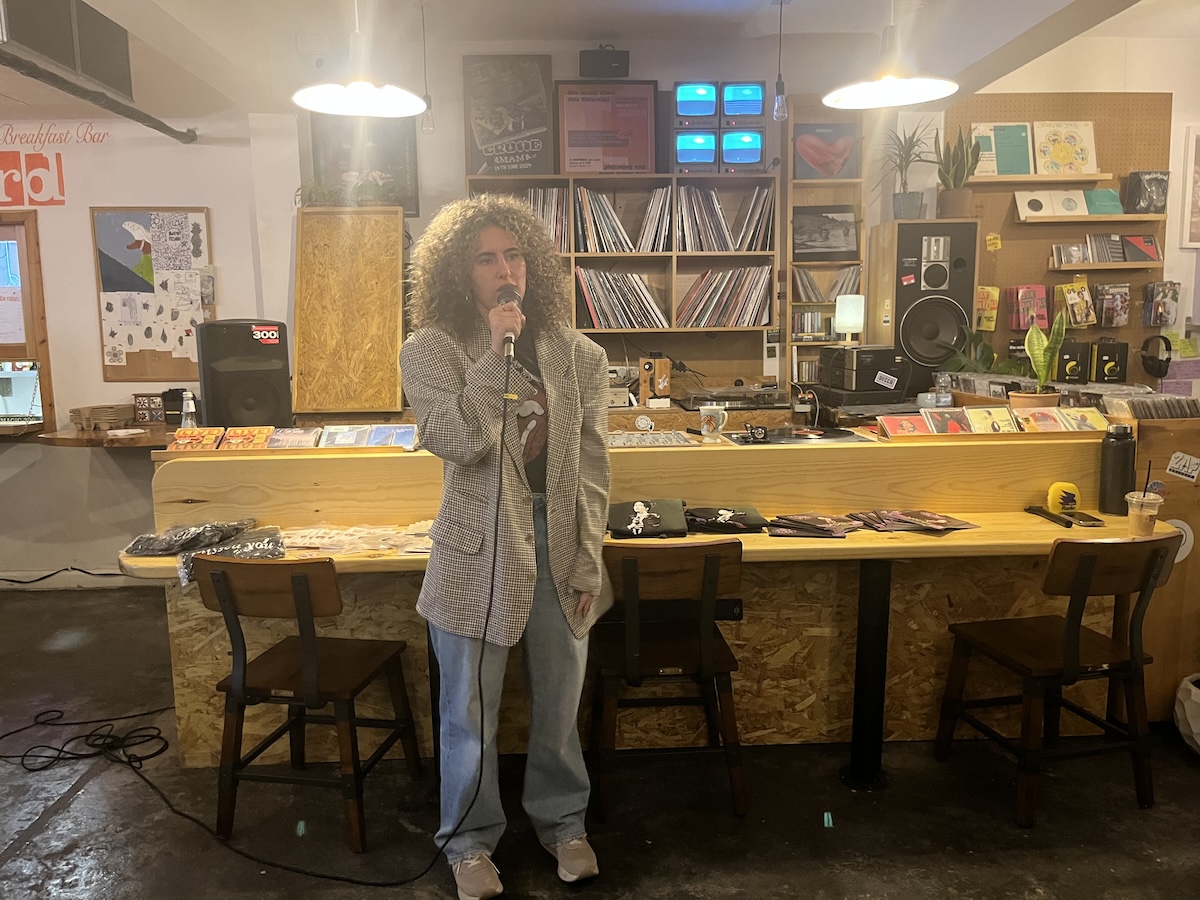
MDLBEAST Radio co-hosted their first such event in Tamtam’s hometown, Riyadh, a few weeks earlier — a sahoor at Beast House — and this was their second stop on this mission.
“Honestly, I’m so, so happy. This is really cool because we get to play the music,” Tamtam told Arab News.
During the Riyadh sahoor, they merely mingled but did not perform or listen to music.
“In Alkhobar, so many people showed up — people are excited. There aren’t many events going on in Alkhobar, so I really feel like everyone is super appreciative,” Tamtam said.
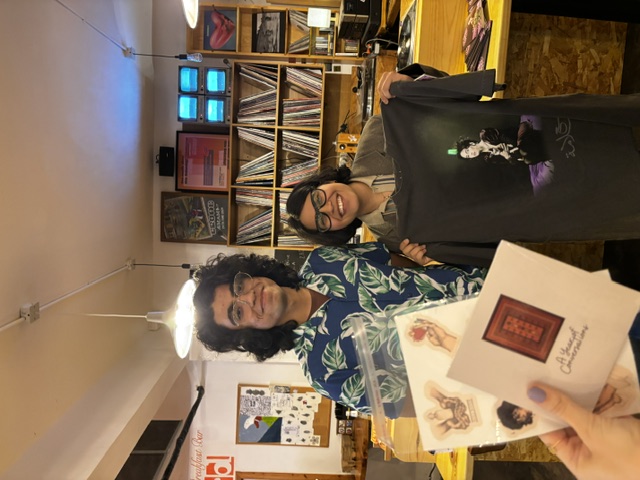
She added: “The whole point of this is for artists and people in the music industry to meet, and that’s what’s happening. Like literally everyone’s telling me, ‘I’ve met so many people, thank you so much.’ I’m so happy — we need it. The goal has been achieved again.”
Raised in Riyadh and now based between the Kingdom and Los Angeles, Tamtam’s music explores themes of identity, gender equality and cultural connection. She blends alternative R&B with pop and personal storytelling, and her independent streak led her to create her own platform for creative control.
“Goast Flower is an independent music label I started a couple of years ago,” she said. “I’ve been releasing my music through it — it was a way for me as an independent artist to have my own label because I don’t want to be controlled by anyone. It’s amazing to have that freedom as an artist. I’m very grateful.”
Beyond being a label, Goast Flower functions as a creative hub. Its first major project, the Saudi Music Community, is a public database designed to help local talent connect.
“I literally collected all the artists I knew. Fulana, another Saudi artist, collected all the artists she knew. We put together a Google document and made it live,” she explained. “Now there’s another document where people can join and add their information, and someone checks it. In this way, artists can find each other in Saudi Arabia. A lot of artists are like, ‘Hey, I’m looking for a female rapper,’ or ‘I’m looking for a guitar player for my live show.’ And now they can just go to the database and find people.”
In Alkhobar, the idea found fertile ground.
Singer-songwriter, architect, photographer and university professor, Yazeed Al-Amasi, who attended both the Riyadh and Alkhobar events, said: “I’ve been living here in Dhahran since 2011, and this is the first time I feel super connected to the music community,” he told Arab News. “I don’t want to say it, but I think people are friendlier and more open to collaborating in Alkhobar. Or maybe people in Riyadh were just tired from Ramadan.”

A key part of the gathering was the merchandise exchange, a concept introduced by Tamtam to encourage artistic support without the barrier of money. Participants brought T-shirts, lyric booklets, CDs, stickers and creative works to swap with one another — artist to artist.
“The idea is that instead of spending money, artists are supporting each other. It’s a gesture of support that this community is all about,” Tamtam said.
“I really, really believe in this community, and I don’t think anyone can grow without a community in any industry,” she added. “I just feel like the music industry in Saudi needs this push, and the foundation needs to be stronger.”
During the event, guests took the mic to introduce themselves and share what they were seeking — producers, vocalists, instrumentalists, collaborators. Photographers offering band headshots and live performance images also stepped forward, strengthening the bonds in the room.
“I actually discovered local musician Zamzam through the Saudi Music Community when I was putting this together,” Tamtam said.
Zamzam, a frequent Bohemia performer and lover of all music genres, walked in as Tamtam was speaking about her. Zamzam, who also goes by a mononym, found the database through Tamtam’s initiative and was excited to meet her in person.
Both shrieked in delight on noticing they were face-to-face.
“Maybe we will have a Tamtam and Zamzam collaboration in the future,” someone said in the background.
“I added myself to the database!” Zamzam told Arab News. “I follow Tamtam and I saw the (Instagram) story about Goast Flower. Whenever I see a label or something that could be a creative hub, I want to connect.”
The venue itself played a role. Bohemia Cafe has become something of a beacon for alternative and indie creatives in the Eastern Province.
One of them, Fatima Falath, shared that she had written a song inspired by her visit to Bohemia.
“Two years ago, I was sitting at Bohemia and got inspired by the drawing on their cup,” Falath told Arab News.
“I had some matcha — even in the song we mentioned matcha,” Falath said with a laugh. “I sang and wrote the lyrics, and my friend and producer, who goes by Hajj Alibaba, did the background music. I made all my friends and family listen to it — it’s a driving-around-in-the-car song. I haven’t published it yet, but I’m inspired to publish it tonight at this event because we wrote it here.”
Everyone at Bohemia had a chance to listen to Falath’s creation for the very first time, and many other musicians joined after and played their songs.
Rohit Jayakaran of MDLBEAST Radio drove in from Riyadh to support the event along with Tamtam and the team. For nearly four hours, they were fired up to be there. He was beaming as the songs were being played.
“We’re very excited to be part of the Saudi music community and support it as MDLBEAST Radio,” Jayakaran told Arab News. “We believe that great things will come out of this community. Bohemia — this is the place where people come for music in Sharqiya. What I discovered today is that there is a community — and it’s a growing community. It’s eclectic. It has all sorts of dynamic energies in here. And it’s just really nice to have this here because it didn’t exist before. It’s amazing. It’s awesome.”
Jayakaran hopes that connections made will showcase their collaborative talents at the next live show at Bohemia, in Riyadh, or just in general.
For now, Goast Flower remains Tamtam’s personal label — though she doesn’t rule out signing other artists in the future.
“I really, really respect the artist. Unless I know I can invest a lot of money in the artist — money, time and effort — I’m not going to sign them,” she said. “A lot of the big people in this industry take advantage of artists. Artists don’t make enough money from streaming. The music business has a lot of work to do.”
She hopes that Saudi Arabia can do things differently.
“Saudi is such a special place right now because it’s the beginning of the music industry. We are in a place where we can shape it in a different way — we don’t have to copy the West. We can learn from the mistakes happening in other industries.”
Next, Goast Flower is headed to Jeddah, where they will host a similar activation on April 16 at Hayy Jameel.
It will essentially go from the heart of the Kingdom to the two coasts, like a hug to the music community in Saudi Arabia.















